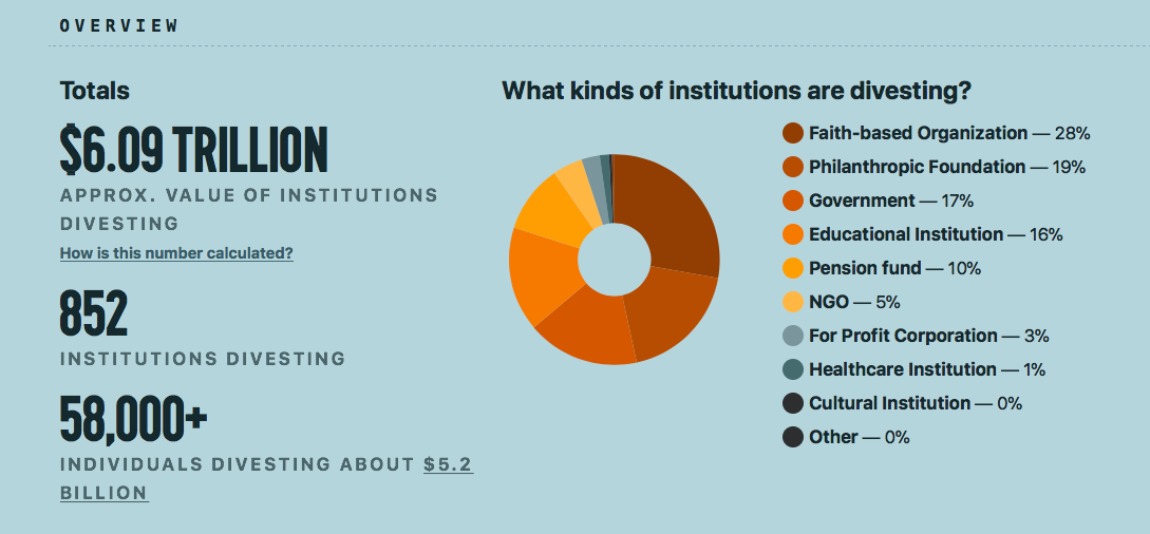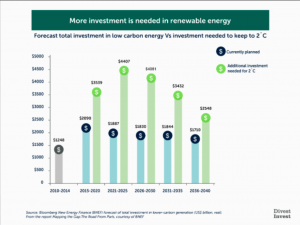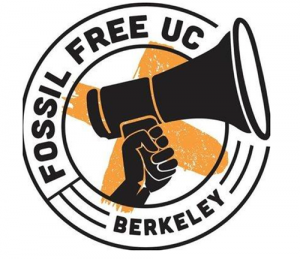Fossil Fuel Divestment
By Richie Unterberger
Fossil fuel divestment—sometimes called fossil-free investment, to put a more positive spin on the concept—is the most rapidly expanding movement within socially responsible investing. Compared to SRI pillars like screens for companies involved in weaponry, tobacco, and human rights abuses, going fossil-free is a bit of a latecomer to the game. But according to gofossilfree.org, by now nearly 60,000 individuals have divested more than $5 billion from fossil fuels. And almost a thousand institutions have divested about $6 trillion.

Despite its explosive growth, many committed socially responsible investors—and certainly much of the general public—don’t know much about going fossil free with their finances. How did fossil fuel divestment start, and grow so quickly? And what’s the most effective way to adjust your portfolio if you want to get in on the movement?
Like many progressive causes—from anti-war protest during the Vietnam era to sweatshop-free clothing in the 21st century—fossil fuel divestment got off the ground in college campuses. About a half dozen years ago, students started pressuring several such institutions to divest from fossil fuels. Just as crucially, administrations were called upon to proactively invest in clean energy and environmentally sustainable practices.
By spring 2012, the movement had spread from about half a dozen campuses to more than fifty. Today, according to gofossilfree.org, more than 850 institutions have divested or committed to doing so. This includes lots of colleges, but also plenty of faith-based organizations, philanthropic foundations, and city governments, including major metropolises like San Francisco, Seattle, and Stockholm. Even some pension funds, NGOs (non-governmental organizations), and for-profit corporations have joined the campaign.
The main motivation to go fossil-free, of course, is to both combat climate change and develop safer, more sustainable energy production. But there are pretty sound financial reasons to do so too. With markets around the globe and here in the US shifting investments to greener technologies (even at a time when the current administration is often hostile to such innovations), fossil fuel companies might be overvalued, and poor risks for investing even part of your assets.
This “carbon bubble,” as it’s sometimes termed within the industry, has according to the DivestInvest site “already burst for the coal sector, leading to billions of dollars in losses” and bankruptcies. According to the same site, more than 75% of fossil fuel reserves will have to stay where they are—as “stranded assets”—to alleviate global warming. That would cost $33 trillion in lost revenue. It’s another factor in devaluing such companies, but also another force driving markets toward more renewable sources like solar power, whose companies could well increase in value as fossil fuel fortunes decline.
As DivestInvest global director Clara Vondrich tells Effective Assets, “The clean energy transition is well underway. There is a synergy now between the falling costs of renewables and the rising costs of new fossil fuel exploration in hard to reach places, such as deepwater, the Arctic, and oil sands.
“These market forces are being assisted by the mother of all market signals, the Paris Climate Agreement. As countries and subnational governments continue to make good on their Paris promise, passing policies to price carbon and otherwise limit emissions, renewable energy is the clear winner.
“Investors who divest and invest now are protecting their assets from carbon bubble, while positioning themselves to capture the upside of the transition. There are a growing suite of fossil-free investment vehicles available to retail and institutional investors alike, with competitive and often superior financial performance. The time when investors had to choose between profit and values is past.”

Early this year, one divestment in particular took going fossil-free from the financial section into front-page headlines. On January 10, New York mayor Bill de Blasio announced the city’s pension funds would divest an astonishing $5 billion from companies involved in fossil fuel. Washington, DC had been the largest US city to divest its pension fund, as it did in 2016. But New York’s fund (totaling $189 billion in value) is, like most things in the Big Apple, yet bigger and more significant.
“Bill de Blasio and NYC Comptroller Scott Stringer are taking their leadership on divestment to the next level,” enthuses Vondrich. “We just hosted a webinar for city officials around the world. Mayor de Blasio’s commitment is remarkable, and he already used his influence to help bring London over the line. There’s no question that when the financial heartbeats of the world – London and New York City – pledge to divest, they send a market signal that climate risk is a material financial risk, which pension fund fiduciaries can no longer ignore.”
For good measure, de Blasio also announced a lawsuit against fossil fuel giants BP Exxon Mobil, Chevron, ConocoPhillips, and Shell for the billions of dollars in damages the city has spent fighting the effects of climate change. In doing so, New York became the eighth city to sue the fossil fuel industry in a trend that’s largely rooted in Northern California, the list also including San Francisco, Oakland, Marin, San Mateo, and Santa Cruz.
Outside the US, in July 2018, the Republic of Ireland became the first country to in effect divest from fossil fuels. The Irish parliament passed a bill requiring the state’s national investment fund to sell its investments in coal, oil, gas, and peat—amounting to more than 300 million pounds—“as soon as is practicable.” Elsewhere in Europe, Norway trillion-dollar sovereign wealth fund has partially divested from fossil fuels, targeting some coal companies in particular, though it’s still considering whether to sell its oil and gas holdings.
But is it more effective, as some argue, to “engage” with the fossil fuel industry, via shareholder actions or other ways, to change or at least modify their policies? Or is divestment from fossil fuels the more effective strategy, or indeed the only reasonable one? The debate’s gotten big enough to leap from the financial section to the heart of the mass media. In Rolling Stone, for instance, renowned environmentalist, author, and 350.org co-founder Bill McKibben recently criticized New York State’s controller for pushing for engagement instead of divestment.
The SRI community has to grapple with these pros and cons as well. To take one example, Green Century Capital Management is a mutual fund advisory company founded, managed, and owned by a partnership of non-profit environmental organizations. How does Green Century view the dilemma, considering it’s worked for engagement on some issues, but advocates divestment from fossil fuels?
“Company engagement through shareholder advocacy can be successful when working with companies to adopt more sustainable business practices,” observes Green Century president Leslie Samuelrich. “Green Century has led successful shareholder engagements with over a hundred companies to stop rainforest destruction, protect water supplies, reduce carbon footprints and stop the misuse of antibiotics and mistreatment of animals.
“But engagement is not a viable avenue when trying to inherently change a company’s core business, as with fossil fuel companies. For example, shareholder resolutions that oppose oil drilling and fracking are not permitted with oil and gas companies. Furthermore, shareholders have filed more than 100 climate-related resolutions with fossil fuel companies since 1990, and despite these efforts, none have directly reduced production of fossil fuels. Engagement with the fossil fuel industry will yield too little, too late, which is why we have championed the fossil fuel divestment movement since its founding in 2012.”
It’s great that cities and institutions have divested trillions, yet there’s a big gap—three zeros at the end of the number, pretty much—between that amount and the $5 billion individuals have divested. $5 billion is still a big sum, obviously. But what are the most important specific impacts individuals can make that might be different than the larger institutional ones?
“The fossil fuel divestment movement needs individuals as well as institutions,” urges Samuelrich. “It is individuals that have successfully organized to get any institution to take action since administrators at universities or pension funds have been at the vanguard. For many years, the New York City Pension Fund was adamantly opposed to divesting from fossil fuels – in fact, I debated them on this very topic about one and half years ago in NYC. But it was the persistence of individuals who kept pressing until they changed.”
As another incentive for individual divestment, she adds, “It is usually easier and faster for individuals to move away from supporting fossil fuel companies and into sustainable investments – and that helps build the divestment movement quickly. Individuals can do it themselves or can work with a financial advisor who is well versed in fossil fuel free options and can put them into the appropriate mutual funds and community investments.”

Where do you begin if you’re an individual investor — or, you could say, individual divestor? Fossilfreefunds.org’s fossil free action toolkit has some basic resources to get you on your way. For a start, it can check whether your portfolio has funds connected to fossil fuels. Click on the “Menu” icon on the top right of its home page, and you get links to a wealth of info about where fossil fuels are invested.
Especially alarming is the section spelling out exactly how much major mutual fund managers have invested in fossil fuel stocks. Vanguard, for instance, has $319 billion, and American Funds $136 billion. If other managers like Franklin Templeton aren’t as waist deep in the big muddy, its $29 billion is hardly chump change.
Should you consider working with a financial advisor to steer your money in the right direction, Effective Assets in Berkeley, California has been offering fossil-free portfolios since 2012. “Our goal is to make 100% of the firm fossil-fuel free, and we’re well on our way to being there,” notes principal financial planner Justin Martello. “The majority of our accounts are fossil-free.”
“We recognize that this is the fastest-growing movement in the history of socially responsible investing — even faster than the one to end apartheid,” he continues. “Climate change is the most important issue in our lifetimes. So it’s important to us to be able to offer investors fossil-free portfolios.”
Effective Assets, he emphasizes, offers portfolios that are both socially responsible and fossil-fuel free. If it seems like socially responsible portfolios should by definition avoid fossil fuels, that’s not always the case. One fossil-free option, for instance, “is sponsored by an environmental group, but has investments with companies that wouldn’t pass environmental screens. Fossil fuels are the only issue they’re looking at, and their overall strategy wouldn’t appeal to social investors.”
“We’ve seen exchange traded funds marketed as low carbon with weapons and tobacco holdings. It’s important to get under the hood and know what’s really inside of these funds that are claiming to be fossil-fuel free. And we don’t just guide investors away from these places. We also help them use their assets for solutions to the climate crisis, often with colleagues like the First Affirmative financial network, and the numerous portfolio managers and mutual funds that we partner with.”
“In our thirty-year history, we’ve never been as excited to be as involved in a movement as critically important as this. When we’re helping our clients, this is truly a way to make a difference and change the world.”
– –
Based in Berkeley, California, Effective Assets helps clients integrate their personal, social, and environmental values with their financial objectives. In 2018 B Lab, the non-profit that certifies companies using the power of business to solve social and environmental problems, put Effective Assets on its Best of the World List of “companies leading the way to a shared and durable prosperity for all.” For more information, go to Effectiveassets.com.